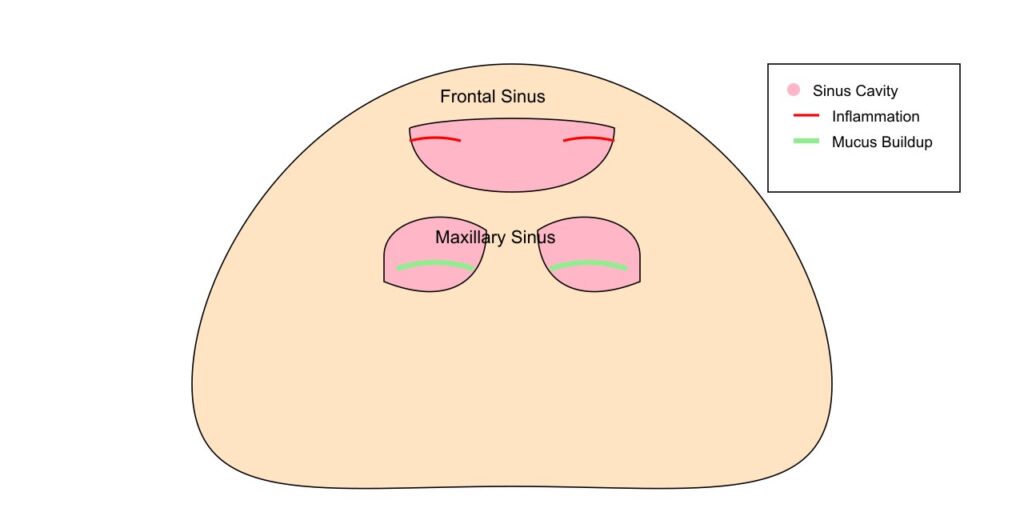A sinus infection, also known as sinusitis, is an inflammation of the air-filled spaces within the bones of your face and forehead (sinuses). Here’s what you should know:
Key aspects:
- The condition occurs when your sinuses become swollen and inflamed, typically due to a viral infection
- This inflammation leads to mucus buildup and difficulty draining
- Common symptoms include facial pain/pressure, nasal congestion, thick nasal discharge, and reduced sense of smell
- Can be either acute (short-term) or chronic (lasting 12 weeks or longer)
Common causes:
- Viral infections (most common)
- Bacterial infections
- Allergies
- Nasal polyps
- Deviated septum
Treatment typically involves:
- Nasal decongestants
- Saline nasal sprays
- Over-the-counter pain relievers
- Antibiotics (only if bacterial)
- Steam inhalation
- Plenty of fluids
You should see a doctor if symptoms persist beyond 10 days or if you have severe symptoms like high fever or severe facial pain. I’ve included a diagram showing the main sinus cavities and how inflammation affects them. The red lines indicate inflammation, while the green lines show mucus buildup that occurs during infection.


